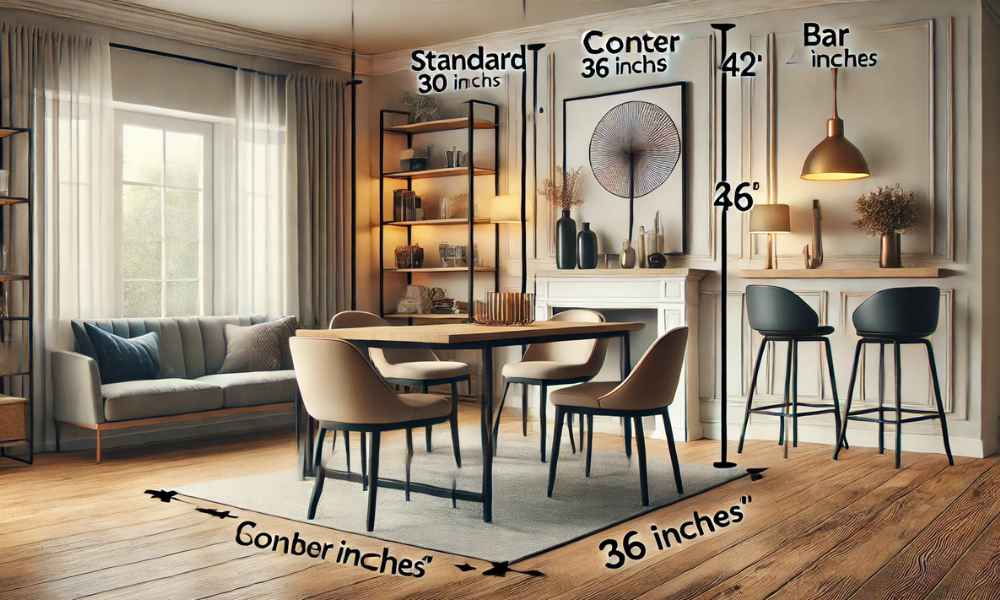A dining table is more than just a piece of furniture—it’s the heart of the home. It’s where families gather, meals are shared, and conversations flow. But one question that often arises when purchasing or designing a dining space is, how tall is a dining room table? While it may seem like a minor detail, table height significantly impacts comfort, aesthetics, and functionality. Understanding standard heights and how they fit into your space can help you create a dining area that is both practical and inviting.
Standard Dining Table Heights
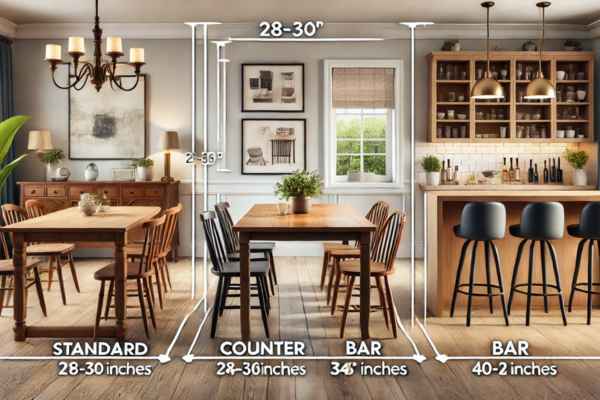
Dining tables come in different heights to accommodate various seating arrangements and styles. The three primary categories of dining table heights are:
- Standard Height (28 to 30 inches) – This is the most common dining table height, ideal for everyday meals and traditional dining rooms. It pairs well with chairs that have seat heights ranging from 17 to 19 inches.
- Counter Height (34 to 36 inches) – A slightly elevated option that creates a casual, modern look. Often found in open-plan kitchens and informal dining spaces, counter-height tables pair well with stools or chairs that have a seat height of 24 to 26 inches.
- Bar Height (40 to 42 inches) – This taller dining option is frequently seen in pubs, game rooms, and modern kitchen islands. It provides a more relaxed, social atmosphere and requires bar stools with seat heights between 28 to 30 inches.
Each height category serves a different purpose, and choosing the right one depends on how you intend to use your dining space.
Choosing the Right Dining Table Height for Your Space
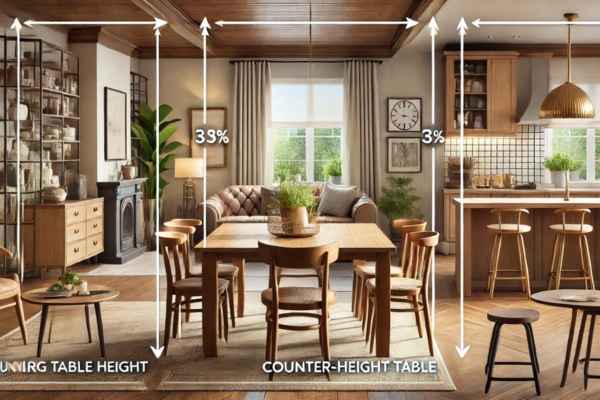
Selecting the perfect dining table height, consider the following factors:
- Room Size and Layout – In smaller spaces, a counter-height table can create a more open feel, while a standard table is best suited for traditional dining areas.
- Seating Compatibility – Ensure that your chosen chairs or stools complement the table height to prevent awkward seating positions. A good rule of thumb is to leave about 10–12 inches between the seat and the tabletop.
- Functionality and Usage – If you use your dining table for multiple purposes, such as working or entertaining, an adjustable or counter-height option might be ideal.
By aligning table height with your space and lifestyle, you can create a dining area that is both comfortable and stylish.
Factors That Influence Dining Table Height
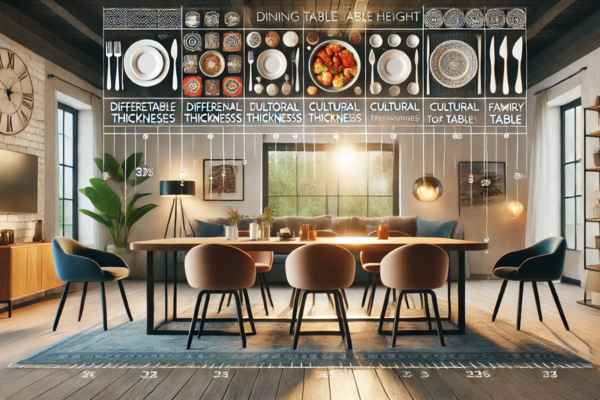
Several factors determine the height of a dining table beyond just standard measurements:
- Tabletop Thickness – A thick tabletop can subtly increase the table’s overall height, affecting the chair-to-table ratio.
- Cultural and Regional Preferences – Different countries and cultures have varying standards for dining table heights, depending on traditional dining customs.
- User Needs – Households with children or elderly family members may prefer a lower table for accessibility and comfort.
Understanding these influences can help tailor your choice to fit your household’s specific needs.
Special Considerations for Different Dining Setups
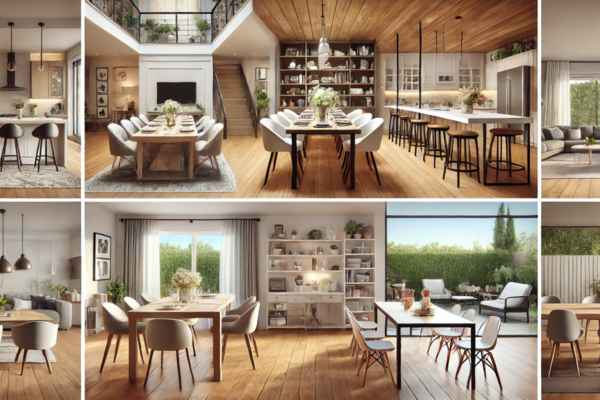
Not all dining spaces are the same, and table height should be chosen with the intended setting in mind:
- Formal Dining Rooms – A standard-height dining table is the best choice for an elegant and timeless look.
- Casual and Open-Concept Spaces – Counter-height tables work well in modern, relaxed environments where dining and kitchen areas blend.
- Kid-Friendly Homes – A lower dining table can make it easier for young children to sit and eat comfortably without needing high chairs.
- Outdoor Dining – Patio tables often have different height standards, with some being slightly higher to accommodate bulkier outdoor seating.
Selecting the right height for your setup enhances both the visual appeal and practical use of the dining area.
Custom and Unique Dining Table Heights

While standard heights work for most, some homeowners and designers prefer customized dining tables tailored to their unique needs.
- Custom-Built Tables – If standard heights don’t fit your space, a carpenter can craft a custom table with precise measurements.
- DIY Dining Tables – For those who enjoy woodworking, building a dining table allows full control over height and design.
- Adjustable Dining Tables – Some modern designs feature extendable or height-adjustable mechanisms, offering flexibility for various occasions.
Customization ensures that your dining table perfectly aligns with your space, style, and comfort preferences.
Practical Tips for Measuring and Adjusting Table Height
Finding the perfect dining table height requires accurate measurements and, in some cases, minor adjustments:
- How to Measure Table Height – Use a tape measure from the floor to the tabletop’s highest point to get an accurate reading.
- Adjusting Table Height – If a table is too low, adding furniture risers can help. If it’s too high, shortening the legs may be necessary.
- Chair and Table Compatibility – Always test different seating options before purchasing to ensure a comfortable height ratio.
These practical tips will help ensure that your dining table is as functional as it is stylish.
Conclusion
Choosing the right dining table height goes beyond aesthetics—it directly affects comfort, usability, and the overall dining experience. By understanding standard table heights, considering your space and needs, and exploring customization options, you can find the perfect table for your home. Whether you opt for a classic standard height, a modern counter table, or a unique custom piece, ensuring the right proportions will create a welcoming and functional dining environment.
